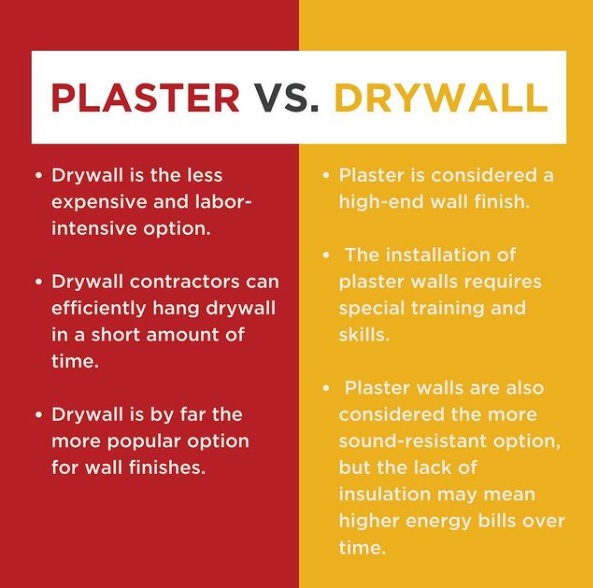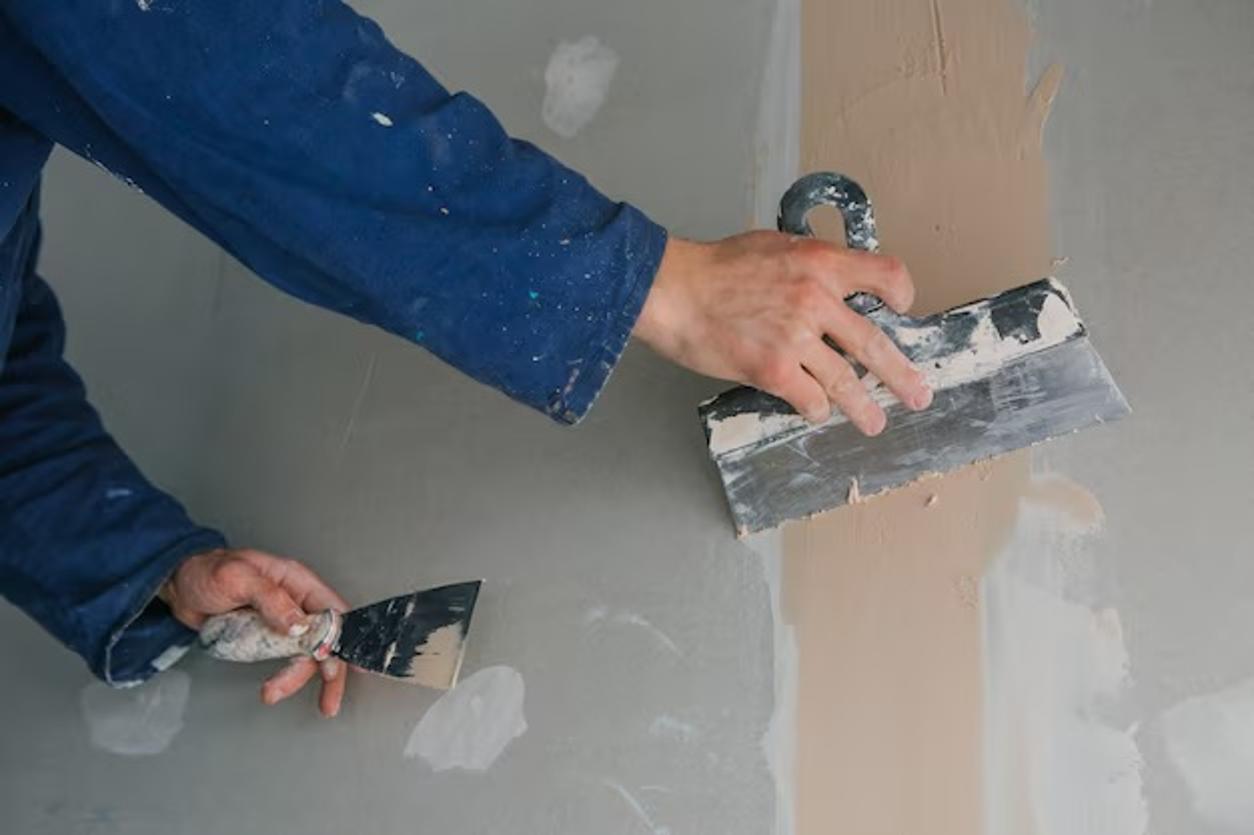You’ve likely encountered both plastering and drywall, but what do these terms really mean? How do they compare for finishing walls?
Plaster vs. Drywall
Plaster and drywall are common wall coverings in homes, typically applied over wood studs. Plaster can effectively cover uneven surfaces, including brick veneers and rough concrete, while drywall (or sheetrock) is often favoured for its resistance to moisture, fire, and humidity.
Both materials come pre-primed and ready for application, but many homeowners choose plaster for its simpler installation process.
Pros and Cons
Plaster:
- Pros:
- Easy to apply
- Suitable for uneven surfaces
- Resists water and mold
- Cons:
- Takes more time and effort to install
Drywall:
- Pros:
- More cost-effective
- Easier to handle
- Waterproof
- Cons:
- Not ideal for every application
If installed correctly, neither plaster nor drywall should cause damage when in contact with concrete. If you’re uncertain about your home’s construction, consulting professional painters is advisable.

Cost Considerations
The cost for painting over plaster or drywall varies based on the project size. A small bathroom may need just one coat of plaster, while larger spaces might require multiple coats depending on the thickness.
7 Reasons Why Plaster Is Better Than Drywall
- Cost-Effective: Plastering is often cheaper than drywall, allowing you to allocate funds for other projects.
- Ease of Installation: Plaster doesn’t require special tools or skills, and can often be applied more quickly than drywall.
- Greater Strength: Plaster’s layered construction (gypsum, paper, and more gypsum) offers superior strength compared to drywall’s simpler design, making it less prone to cracking.
- Durability: Plaster is more resilient and resistant to damage, while drywall can crack easily and worsen over time.
- Environmental Impact: Plaster uses significantly less water during production, making it a more sustainable choice.
- Versatility: Plaster can be painted immediately and shaped into custom designs, unlike drywall, which requires priming.
- Healthier Option: Plaster doesn’t produce harmful dust, unlike drywall, which contains chemicals that can lead to respiratory issues.
Other Compelling Reasons – Explained
When comparing plastering to drywall, several compelling reasons make plastering the superior choice for many homeowners.
One of the standout features of plaster is its remarkable durability. Unlike drywall, which can easily crack or dent, plaster creates a robust surface that stands the test of time, making it ideal for high-traffic areas and spaces where longevity is a priority.
For those seeking high-quality aesthetics, plaster also provides a smoother finish that can elevate the overall look of a room.
Its ability to be molded into various shapes and textures allows for creative design possibilities, enabling homeowners to achieve a customized appearance that suits their style.
The Evolution of Plastering and Drywall: How Technology Enhances Wall Finishes
In the debate between plastering and drywall, advancements in technology are reshaping the landscape, making plastering an increasingly attractive option for homeowners.
- The Modern Plastering Process
Traditionally, plastering was a labor-intensive process requiring skilled artisans to apply multiple layers. Today, innovations in materials and application techniques have streamlined plaster installation.
New formulations, such as lightweight plasters and pre-mixed options, make it easier and faster to achieve a flawless finish. Modern tools, like sprayers and trowels with advanced designs, enhance the application process, allowing for quicker drying times and a more uniform look.
- Sustainability Through Innovation
Both plastering and drywall have benefited from a focus on sustainability. New eco-friendly plaster options utilise recycled materials and reduced water consumption, further minimizing environmental impact.
- Aesthetic Customisation
Technology has also expanded the creative possibilities for both finishes. With digital design tools, homeowners can visualize different textures and colors, allowing for custom aesthetics that cater to personal style.
Plaster can now be molded into intricate designs more easily than ever, while modern paints and finishes can be applied directly to plaster without extensive prep work.
- Healthier Homes
The push for healthier living spaces is another area where technology plays a key role. Advances in plaster composition have led to the development of low-VOC (volatile organic compound) options that improve indoor air quality.
Plaster not only enhances the aesthetic appeal of spaces like kitchens, bathrooms, and living areas but also improves insulation, reducing energy costs. Additionally, it can be easily removed or replaced during renovations, providing both practicality and style.
Here are some technological equipment commonly used in drywall and building plaster applications:
- Laser Levels: Ensure precise alignment and leveling for accurate installations.
- Electric Mixers: Speed up the mixing process for plaster and joint compounds, ensuring a smooth consistency.
- Sprayers: Apply plaster quickly and evenly over large areas, reducing labor time.
- Trowels and Float Tools: Used for applying and smoothing plaster, with advanced ergonomic designs for better handling.
- Cutting Tools: Specialty knives and saws designed for cutting drywall and plasterboard efficiently.
- Stud Finders: Detects wood and metal studs behind walls, aiding in accurate placement of drywall.
- Dust Extraction Systems: Minimize dust during cutting and sanding, improving air quality and cleanliness on job sites.
- Insulation Blowers: Used for installing insulation materials within drywall spaces, improving energy efficiency.
- Joint Tape and Applicators: For reinforcing seams in drywall installations, ensuring a seamless finish.
- Texturing Guns: Create various textures on plaster finishes, enhancing aesthetic appeal.
The tools and equipment listed here all enhance the efficiency, precision, and quality in drywall and plastering projects.
The Global Drywall & Building Plaster Market
The global drywall and building plaster market is expected to experience significant growth during the forecast period from 2024 to 2032. In 2023, the market was steadily expanding, and with increasing adoption of innovative strategies by key players, substantial growth is anticipated in the coming years.







